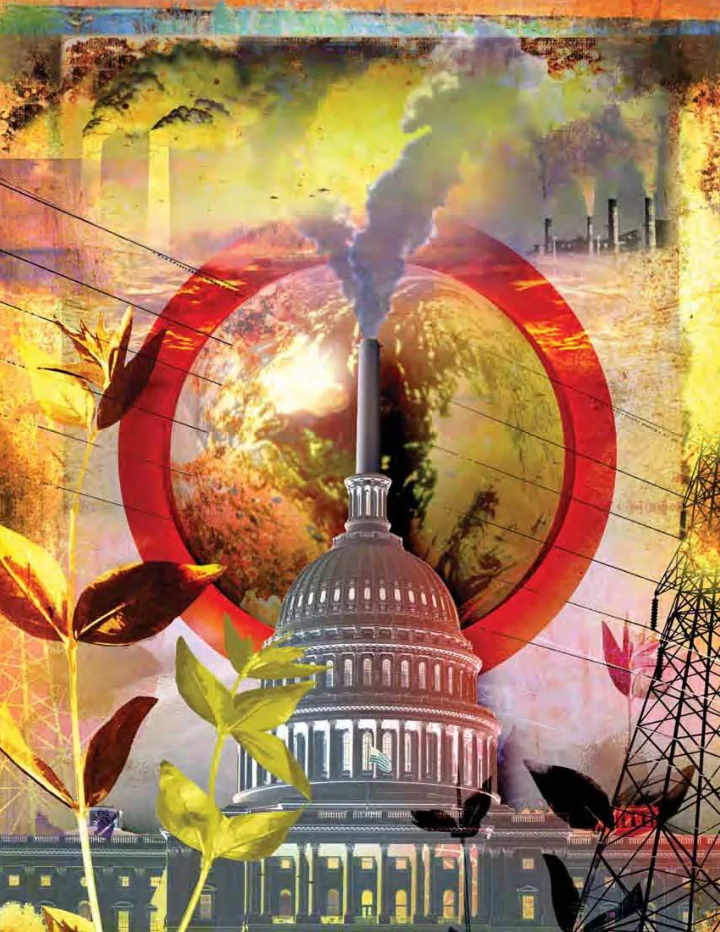

24
By Charles T. Wehland and Stephanie S. Couhig SHAPING FEDERAL CLIMATE CHANGE LEGISLATION: Throughout his campaign, Barack Obama expressed his commitment to combating climate change. In his inaugural address, he again discussed working to “roll back the specter of a warming planet.”1 With the new federal administration and Congress, there remains little doubt that federal climate change legislation is on the horizon. However, the extent and parameters of such legislation are very much an open question. This article identifies and discusses some of the fundamental issues that will need to be resolved in any federal climate change legislation. As an initial matter, some have questioned whether Second, industry itself is pushing for federal the current economy makes near-term federal cli- climate change legislation in order to avoid a mate change legislation unlikely. In these difficult patchwork of conflicting local programs or reg- economic times, the impact of climate change leg- ulation under the Clean Air Act, both of which are seen as undesirable. 2 Federal climate islation on job growth and development will be hotly debated. Yet while the costs of reducing green- change legislation, on the other hand, will pro- house gas emissions can be seen as a drag on vide industry with certainty. economic growth, economic policies and climate change policies are not necessarily in conflict. Additionally, a cap-and-trade program, as dis- cussed below, has the potential for injecting sig- First, the compliance date in any federal legisla- nificant money into the Treasury that could be tion can be set to some point in the future in order used for investments in clean energy technolo- to permit businesses time to prepare to meet their gies and the creation of new jobs. At the same new obligations. A new international climate change time, the implementation of energy efficiency treaty is currently being negotiated to take effect in projects and the construction of renewable 2012, which could be a target date for federal regu- energy facilities can be drivers for the creation lations to take full effect. of a new, green economy. While addressing the 25
Consensus is building among the administration, and industry groups for an 80 percent reduction by 2050. economy is currently the No. 1 priority, there is no indication program, under which limits on GHG emissions would be that it will supplant efforts for greenhouse gas regulation. imposed on facilities through air permits, with penalties for exceeding such limits. This could be accomplished through CHOOSING A REGULATORY APPROACH new legislation or amendments to the Clean Air Act, or poten- At least three different approaches have been suggested tially by using the existing Clean Air Act (an alternative that to regulate greenhouse gas (“GHG”) emissions: (1) cap-and- is explored further in this issue of Practice Perspectives ; see trade; (2) carbon tax; and (3) command-and-control. Under a “A Word of Caution: Can Greenhouse Gases Be Regulated cap-and-trade approach, an overall cap on carbon emissions Effectively Under Existing Law?”). Economic theory suggests would be established and companies would be required that a command-and-control approach would be the least to possess tradable allowances to emit greenhouse gases. efficient means of accomplishing a reduction in GHG emis- Cap-and-trade is the regulatory approach favored by the sions because it mandates specific emission reductions with- Obama administration and has been the approach of most of out regard to cost. the significant federal climate change legislative proposals to DRAFTING A CAP-AND-TRADE PROGRAM date, including the Waxman-Markey American Clean Energy and Security Act, which the House Energy and Commerce Because some variation of a cap-and-trade program appears Committee approved in May. to be a likely component of any federal climate change leg- islation, this section explores some of the key issues that As an alternative to cap-and-trade, some experts have sug- must be resolved in developing such a program. First, since gested imposing a carbon tax, which would set a fixed a cap-and-trade system is premised on a target future emis- price per ton of GHG emissions, thereby providing a finan- sion cap, that overall target must be established. Consensus cial incentive for companies to reduce their emissions. is building among the administration, Congress, and indus- try groups for an 80 percent reduction by 2050. 3 However, Proponents argue that a tax would be easier to implement and would have fewer transactional costs than a cap-and- there is less agreement regarding the number and types of trade system. Furthermore, economic costs are easier to sources that would be subject to regulation, how allowances quantify for a carbon tax than for a cap-and-trade system, would be distributed, treatment of offsets, and the effect of since the price of emissions would be set and not subject federal regulation on state and regional programs. to market fluctuations. However, opponents argue that a tax would not provide a guaranteed level of emission reduction Whom to Regulate? A decision must be made between an and would place an unfair burden on the consumers who economy-wide program that would address GHG emissions are least able to afford the resulting increased energy and from a variety of sources versus a more targeted program gas prices. While some companies may prefer a carbon tax that would be limited to some subgroup of larger emitters. because they would be better able to plan for its costs and Here, legislators must strike a balance between the fairness have more flexibility, garnering political support for a sub- and usefulness of regulating only certain sectors that repre- stantial new tax would likely be difficult. sent only a percentage of total emissions and the administra- tive burden of regulating all sources down to each individual Rather than choosing these market-based approaches, the vehicle. One possible solution is a “phase-in” approach, federal government could instead elect to reduce GHG emis- whereby certain economic sectors that have more experi- sions through a more traditional “command and control” ence in implementing GHG emission controls, such as the 26
Recommend
More recommend